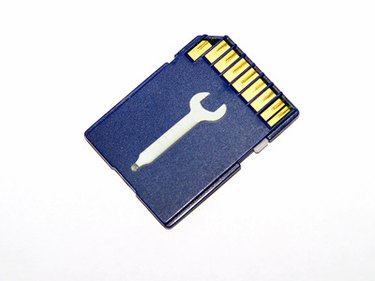
An SD card is a small storage disk used with cameras, cellphones and other portable devices. They are read by the computer using an internal or external card reader. Some portable devices allow you to plug a USB cable directly into the device to access the data on the card. Many Linux distributions will automount SD cards. If the card does not automount, you can use the "mount" command to access the card.
Step 1
Open a terminal window. The terminal window program is found under "System Tools," "Accessories," "Utilities," "Xshells" or in the bottom toolbar and is called "Terminal," "Konsole" or "XTerm," depending on the distribution that you are using.
Video of the Day
Step 2
Insert the SD card into the SD reader on the computer or in an external SD card reader plugged into the computer's USB port.
Step 3
Type the command "fdisk -l" to list the disks that are accessible to the computer. Make note of the device name for the SD card. It will be the first portion of one of the output lines and will look like "/dev/sdc1".
Step 4
Type the command "mkdir /mnt/SD" to create a mount point for the SD card. You can replace "/mnt/SD" in any directory that you prefer.
Step 5
Type the command "mount -t vfat /dev/sdc1 /mnt/SD" to mount the SD card. The "-t vfat" option tells the operating system that it is a Windows file system. Replace "/dev/sdc1" with the device name from Step 3. Replace "/mnt/SD" with the name of the directory you created in Step 4.
Step 6
Type the command "cd /mnt/SD" to access the files on the SD card.
Video of the Day